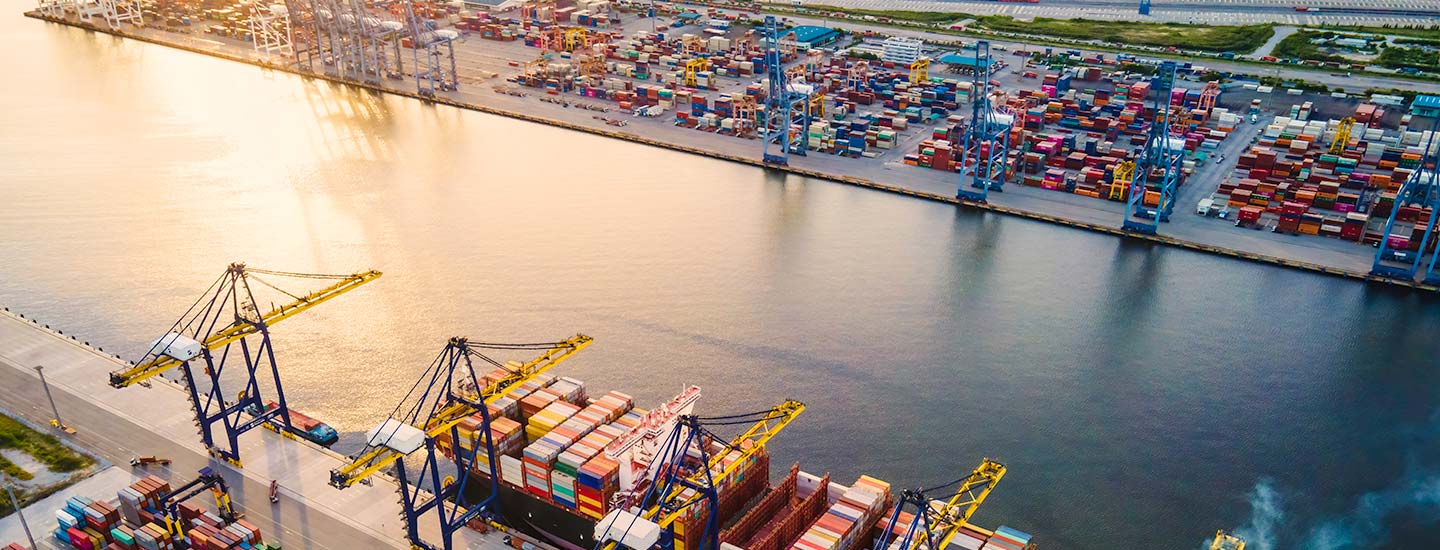It’s been a long couple of years for logistics providers, retailers, and consumers. Although the supply chain industry has made significant headwinds recently, struggles still lie ahead. Here we take a critical look at the challenges that have plagued the supply chain industry, where the industry currently stands, and what we can expect for the future.
Supply Chain Past: Factors that Shook the Industry
A common sentiment is that the supply chain woes we have experienced over the past two years are solely due to COVID-19. Although the pandemic played a significant part, there are some other key factors to note.
For instance, before the pandemic began, the United States engaged in a trade embargo with China, putting a strain on the supply chain industry. It was quite difficult for supply chain networks to find reliable replacement products or customers. The effects of the embargo are still being felt to this day, particularly for west coast suppliers who had strong business relationships with China.
Additionally, many believe that once the United States began reopening following the pandemic, everything would return to normal. Ultimately, reopening was asymmetrical around the globe. The degree to which companies reopened largely depended on the COVID-19 mitigation policies in a particular country. For instance, China had an incredibly strict zero-COVID policy that is still in effect today, even though most countries have moved past mandatory restrictions. China’s strategy has undeniably affected global supply chain networks and will continue to have an impact for some time.
COVID-19 transmission levels also played a part. As we saw in the United States, COVID-19 infections peaked during the winter months, which, coincidently, was the busiest time of year in terms of commodity spending. Additionally, more virulent mutations emerged that made mitigating outbreaks more difficult, which added even more challenges for supply chain providers when managing their workforce, leading to more bottlenecks and setbacks.
Supply Chain Present: An Industry Still in Recovery
As a result of the complications we saw in 2020 and 2021, many retailers overstocked their inventories in 2022 to compensate for likely supply chain disruptions down the line. One notable example is Nike, who increased its Q1 inventory by 61%. Unfortunately, high inflation and other economic factors shifted consumer spending. Many retailers now have a glut of inventory and are resorting to price cuts to clear inventory to accommodate new items.
However, there is another event that is having a drastic impact on consumers and retailers. The current Russian-Ukrainian war has added even more complications to a supply chain industry still recovering from the pandemic. Russia is a powerful force in the global oil and gas market, particularly in Europe. Sanctions in response to Russia’s unprovoked attack forced many Western countries to find different oil suppliers, as many continue to struggle to keep prices down.
Moreover, Ukraine is a massive grain and fertilizer exporter. Russia has recently been accused of blocking essential grain shipments as part of their war efforts, which further increases food prices around the globe.
Supply Chain Future: Transformation on the Horizon with More Challenges Ahead
Much of the wishful thinking that the supply chain industry will return to the way it was before the pandemic has faded. Instead, we should shift the focus to a “new normal” in the industry moving into 2023 and beyond. There are a lot of great innovations that will drastically change the industry permanently.
For example, supply chain automation proves to be a real game changer. Automation can cover everything from security, to robotics, to forecasting and inventory management. Ultimately, automation improves the speed and accuracy of operations and network and onsite security, and automation helps supply chain providers plan ahead.
Although automation will become an incredibly valuable tool, there are some significant challenges that lie ahead for logistics providers. Adverse weather disruptions are likely going to increase as the effects of climate change become more prevalent. These events will have a substantial impact on our ports, highways, railways, airways, and other transportation mediums.
Likewise, cyberattacks are only going to become more sophisticated, leaving many businesses vulnerable to breaches. Supply chain leaders must prioritize security to mitigate inventory loss and network security breaches. Partnering with managed security experts can prove vital to the long-term security plans of supply chain companies.
There is a lot of change on the horizon, as well as challenges that lie ahead. Don’t let security become a pitfall for your company. Vector Security Networks is here to ensure your business is always protected. For more information on how we partner will supply chain leaders, feel free to contact us today.


